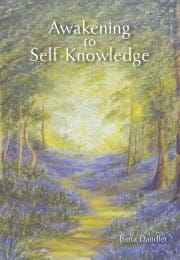Seeing More: Appearance and Reality
The central teaching of Adhyatma Yoga is that if we calm and purify our mind through a spiritual way of life, we will arrive at a deeper understanding of the nature of ultimate reality.
This principle is expressed in a response given by the Indian holy man, Shri Dada of Aligarh, to a questioner who took his stand on the common sense view that the world, as it impresses itself on our mind through our senses, is the only reality we know and can know. Shri Dada pointed out that our mind, in its normal worldly condition, sees only ‘a small blurred part’ of reality. To appreciate the whole picture, efforts must be made on spiritual lines to expand the mind, stimulate its love for infinity, and wean it from its thirst for extracting short-lived joys from finite experiences. ‘Then’, he told his questioner, ‘your lightened mind will rise higher in the spiritual atmosphere… and I assure you, you will see more, much more.’
This ‘seeing more’ is not a question of seeing more in the world around us, nor is it a matter of gaining some unusual power, such as to see into the future, or to read people’s minds—powers, which from the point of view of the highest wisdom, have no value at all. What is meant is the deepening of our power of spiritual vision and self-knowledge, through the awakening of our capacity to see behind the changing appearances of life, and apprehend the underlying reality.
This underlying reality transcends space and time, and words fail to do it justice. But to ease our way towards understanding its nature, we may call it ‘the spiritual realm’, in contrast with ordinary sensory and mental experience, which may appropriately be called ‘the realm of appearances’.
This term ‘the realm of appearances’ is justified for at least two reasons. Firstly, we live in a world of changing forms. These include our own bodies as well as our thoughts, all of which are seen to appear, stay a while, and then disappear. Secondly, there is a more fundamental point that is established by both science and philosophy. All our information about the outer world comes to us through the channels of our sense organs. The mind selectively converts the raw sense data into a composite representation of the world. In this way, the world itself is made known to us as an image or appearance within the mind. It is an image or appearance that is ever changing. For each individual, the way the world appears is different and uniquely personal.
But the spiritual realm is not a mental image, nor does it change. It is more internal, more subtle and more abstract than thought itself. It is a realm of silence, calm and rest, a dimension without walls or boundaries, and which, when fully revealed, has been compared to an infinite ocean of pure consciousness, being and bliss. Nor is the experience of this spiritual realm reserved for gifted souls. This invisible reality interpenetrates and illumines all experience, and is the conscious power underlying all minds, which are animated by a ‘reflection’ of that supreme conscious-ness, and have no independent existence.
So the purification of our mind enables us to ‘see more’ and to approach with increasing certainty the freedom and the peace of the spiritual realm within our own being. The climax of this process of inner clarification is the direct realization that this spiritual realm is the reality in us. It is our ultimate identity. The word ‘I’ is used in Yoga to indicate the nature of this reality, but, in this context, we are speaking of an ‘I’ that underlies our limited personality and is not itself personal or limited in any way. The training of the spiritual Yoga is to learn how to withdraw our sense of identification from the body and the mind, and to realize: ‘I am infinite, immortal, ever perfect, by nature pure intelligence and bliss.’
If we acknowledge that this realm of transcendence not only exists, but is our true nature, then the reality-status of worldly experience, and of the body and mind itself, is called into question. Many philosophers, poets and religious thinkers, keenly aware of the mutability of human life, the world and the mind, challenge our right to call the physical world and its contents absolutely real. For this is the realm where all that appears— whether plants, animals, human beings or even mighty structures like continents, planets and suns—are subject to the process of time, and will inevitably change and decay. The philosophy of Adhyatma Yoga, which is called Advaita Vedanta, shares this view. Whatever is transient, whatever has a beginning and end, cannot be called entirely real. This applies to anything which is perceived or conceived as an object of experience, including one’s body, mind and the world. All are consigned to the category of the not-Self, with the strong implication that these phenomena are not wholly real. In contrast, the subtle realm of our innermost spiritual nature is not just real, but reality itself, ultimate reality, and it is one undivided principle with nothing outside or beyond it, existence-consciousness-bliss absolute by nature.


